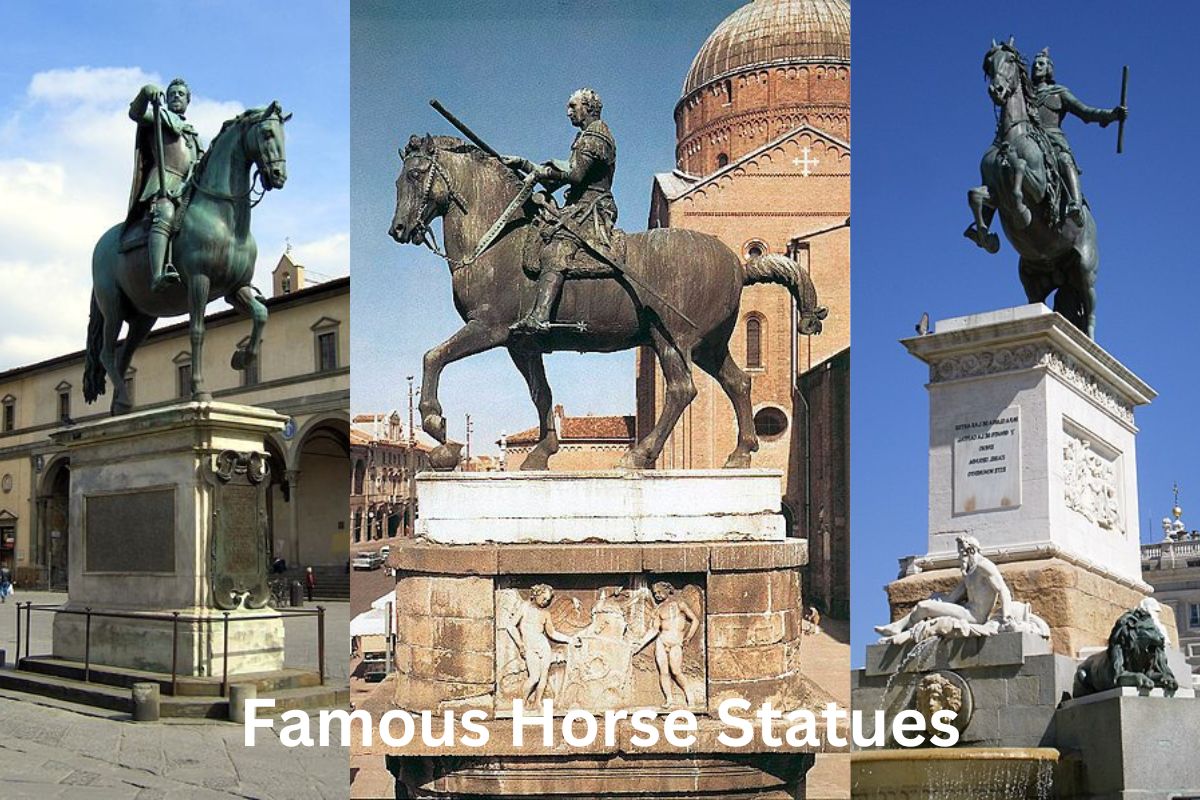Horses have been an important part of human history and culture for thousands of years, and their significance is reflected in the many horse statues found around the world.
From ancient Greece to modern-day cities, horse statues have been erected to honor military leaders, gods and goddesses, and other important figures throughout history.
Some of the most famous horse statues include equestrian sculptures of Roman emperors, military leaders from different eras, and even fictional characters.
These equestrian statues are not only beautiful works of art but also serve as a reminder of the important role horses have played in human history.
Famous Horse Statues
1. Equestrian Statue of Marcus Aurelius
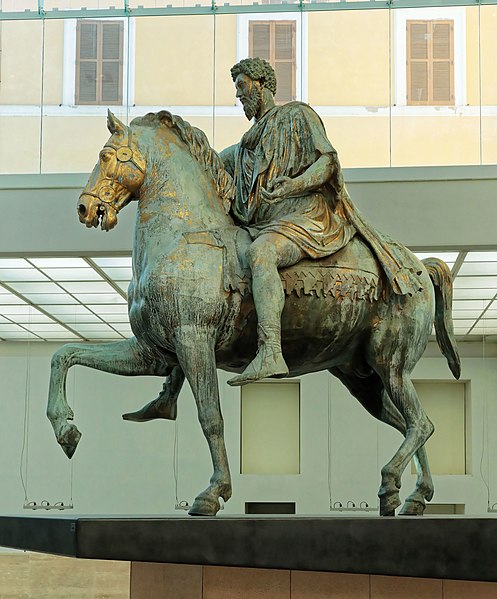
The equestrian statue of Marcus Aurelius is a bronze statue located in the Campidoglio in Rome. The statue depicts the Roman Emperor Marcus Aurelius mounted on a horse, with his right arm raised as if addressing his troops.
The statue is considered one of the most important examples of Roman equestrian statuary, and is the only surviving ancient equestrian statue that is fully preserved.
The statue was originally erected in the second century AD in the central square of the Roman city of Mediolanum (now Milan), but was later moved to Rome by the Emperor Constantine.
During the Middle Ages, the statue was thought to depict the Christian Emperor Constantine, and was therefore spared from destruction. However, it was later identified as Marcus Aurelius during the Renaissance.
The statue is notable for its realism and attention to detail. Marcus Aurelius is depicted wearing military dress, with his armor and cloak flowing realistically in the wind.
The horse, which is believed to be a type of horse called a Parthian, is also highly detailed, with its veins and muscles clearly defined.
The equestrian statue of Marcus Aurelius is an important symbol of Roman power and military might, and is widely regarded as one of the most impressive examples of ancient Roman art.
2. Equestrian statue of Gattamelata
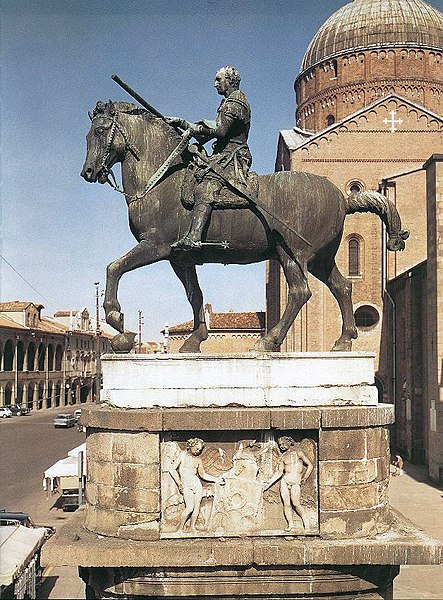
The Equestrian statue of Gattamelata is a bronze statue of the Italian condottiero Erasmo da Narni, also known as Gattamelata. The statue is located in the Piazza del Santo in Padua, Italy.
The statue was created by the famous Italian sculptor Donatello in the 15th century and is considered one of his masterpieces. It was commissioned by the Republic of Venice to honor Gattamelata, a renowned mercenary leader who served as the captain general of the Venetian army.
The statue depicts Gattamelata on horseback, wearing full armor and holding a baton in his right hand. The horse is also highly detailed, with its veins and muscles clearly defined, and its head turned slightly to the right as if looking at something in the distance.
The statue is notable for its realistic portrayal of the horse and its rider, as well as its attention to detail. The folds in the fabric of Gattamelata’s clothing, for example, are highly detailed and give the statue a sense of movement and life.
The Equestrian statue of Gattamelata is considered one of the most important examples of Renaissance sculpture, and is highly regarded for its artistic and historical significance.
3. Equestrian statue of Bartolomeo Colleoni
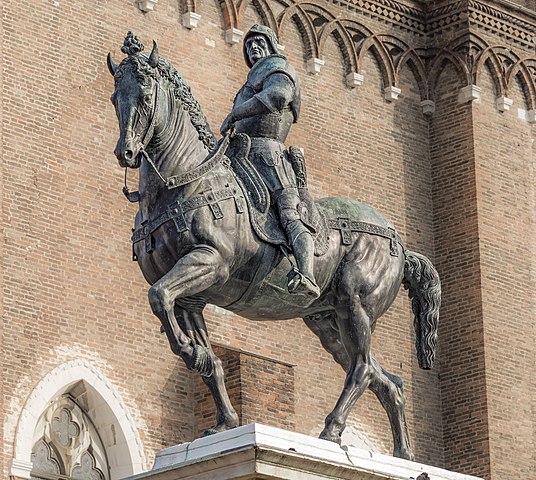
The Equestrian statue of Bartolomeo Colleoni is a bronze statue located in the Campo Santi Giovanni e Paolo in Venice, Italy. The statue depicts the Italian condottiero Bartolomeo Colleoni, who was a mercenary captain in the Venetian army.
The statue was created by the Italian sculptor Andrea del Verrocchio in the late 15th century and is considered one of his masterpieces. It was commissioned by the Republic of Venice to honor Colleoni, who had left a large sum of money to the city in his will.
The statue depicts Colleoni on horseback, wearing full armor and a plumed helmet. His right hand is raised as if giving orders, while his left hand holds the reins of the horse.
The horse is also highly detailed, with its veins and muscles clearly defined, and its head turned slightly to the left as if looking at something in the distance.
The statue is notable for its realism and attention to detail, particularly in the depiction of the horse’s movement and the intricate details of Colleoni’s armor.
It is considered one of the most important examples of Renaissance sculpture, and is highly regarded for its artistic and historical significance.
The Equestrian statue of Bartolomeo Colleoni is a symbol of the power and might of the Venetian Republic, and is a testament to the skill and artistry of Andrea del Verrocchio.
4. Genghis Khan Equestrian Statue
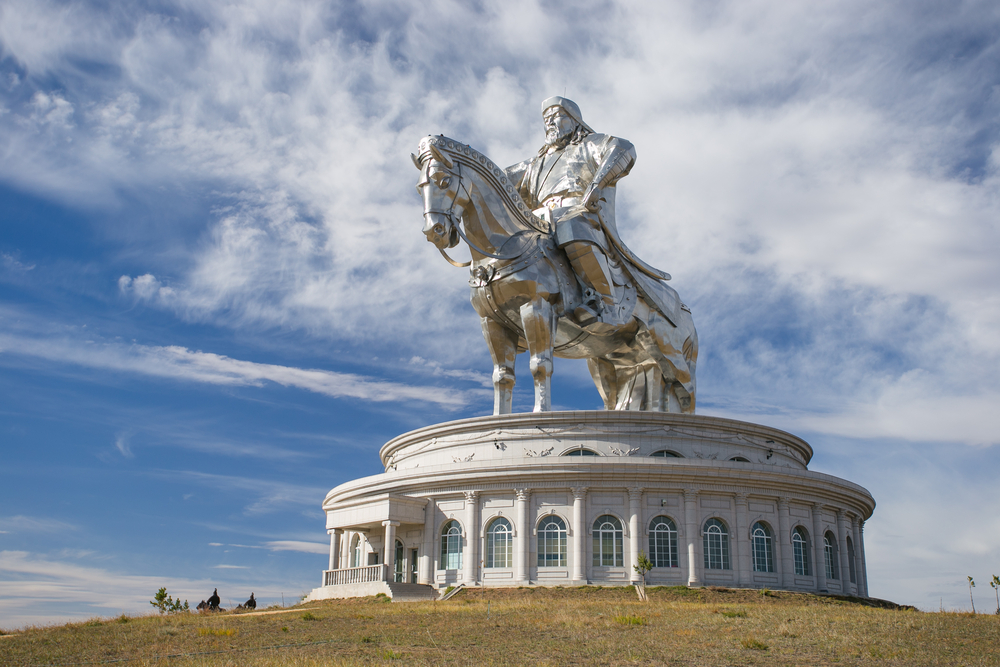
The Genghis Khan Equestrian Statue is a large stainless steel statue located on the bank of the Tuul River in Mongolia, about an hour’s drive from the capital city of Ulaanbaatar. The statue depicts the legendary Mongol warrior and founder of the Mongol Empire, Genghis Khan, on horseback.
The statue, which stands at over 130 feet tall, was erected in 2008 and is considered one of the largest equestrian statues in the world. It was built to commemorate the 800th anniversary of the founding of the Mongol Empire and is an important symbol of Mongolian national identity and pride.
The statue depicts Genghis Khan on horseback, with his right arm raised as if giving orders. The horse is also highly detailed, with its veins and muscles clearly defined, and its head turned slightly to the left as if looking at something in the distance.
Visitors can climb up to the head of the horse and enjoy panoramic views of the surrounding countryside. There is also a museum at the base of the statue that tells the story of Genghis Khan and the Mongol Empire.
The Genghis Khan Equestrian Statue is a popular tourist attraction and a powerful symbol of Mongolian history and culture. It is a testament to the enduring legacy of Genghis Khan and the Mongol Empire, and serves as a reminder of the importance of horses in Mongolian culture and history.
5. Bronze Horseman
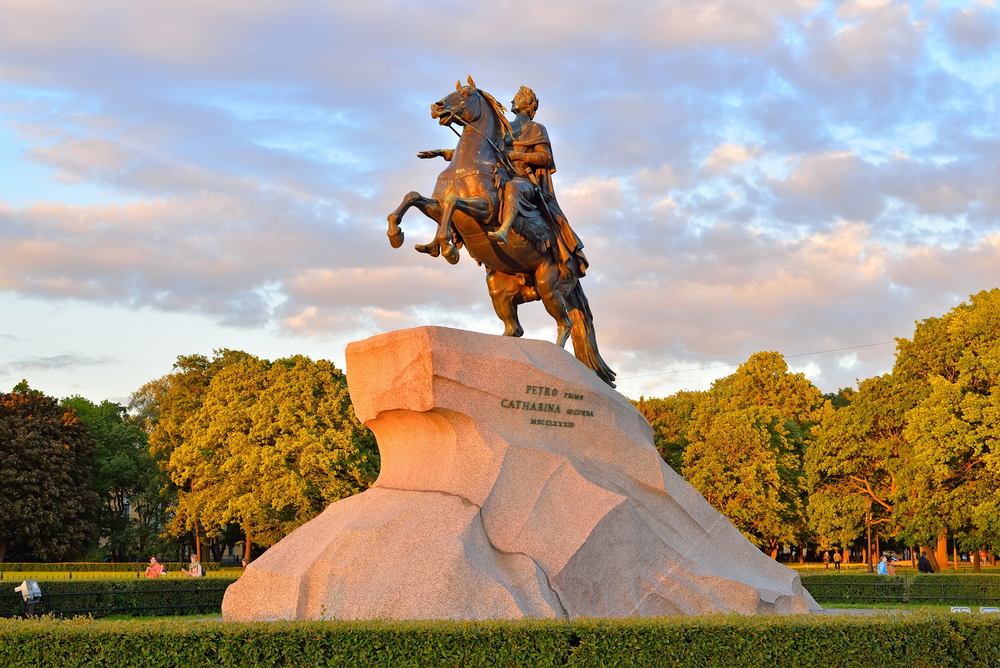
The Bronze Horseman is a bronze statue of Peter the Great, located in Senate Square in St. Petersburg, Russia. The statue was created by the French sculptor Étienne Maurice Falconet in the 18th century and is considered one of the most famous equestrian statues in the world.
The statue depicts Peter the Great on horseback, with his right hand pointing towards the Neva River, symbolizing his vision for a strong Russia with a powerful navy. The horse is also highly detailed, with its veins and muscles clearly defined, and its front left leg raised as if in motion.
The statue is famous for its grandeur and scale, and for the fact that it was created using a single piece of bronze, which was an impressive technical feat for the time.
It is also famous for the poem “The Bronze Horseman” by Alexander Pushkin, which tells the story of a man named Evgenii who is driven to madness by the statue.
The Bronze Horseman is an important symbol of Russian history and culture, and is considered a masterpiece of 18th-century sculpture. It is a popular tourist attraction in St. Petersburg, and is widely regarded as one of the most important and impressive equestrian statues in the world.
6. Jeanne d’Arc (Frémiet)
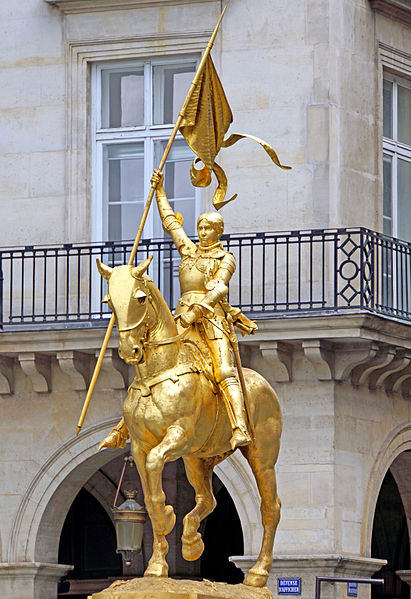
The Jeanne d’Arc statue by Emmanuel Frémiet is a bronze statue located in Paris, France. The statue depicts Joan of Arc, the French heroine and martyr, on horseback.
The statue was created by Frémiet in the late 19th century and is located in the Place des Pyramides in the 1st arrondissement of Paris. It is considered one of the most famous equestrian statues in France and a powerful symbol of French national identity.
The statue depicts Joan of Arc wearing armor and holding a flag in her right hand. Her left hand is raised, as if pointing towards the enemy. The horse is also highly detailed, with its veins and muscles clearly defined, and its head turned slightly to the left as if looking at something in the distance.
The statue is notable for its realism and attention to detail, particularly in the depiction of Joan of Arc’s armor and the intricate details of the horse’s tack. It is also notable for the fact that Joan of Arc is depicted wearing men’s clothing, which was highly unusual for the time.
The Jeanne d’Arc statue is an important symbol of French history and culture, and is widely regarded as one of the most important equestrian statues in the world. It is a testament to the bravery and heroism of Joan of Arc, and a reminder of the important role she played in French history.
7. Jan-Wellem-Reiterstandbild
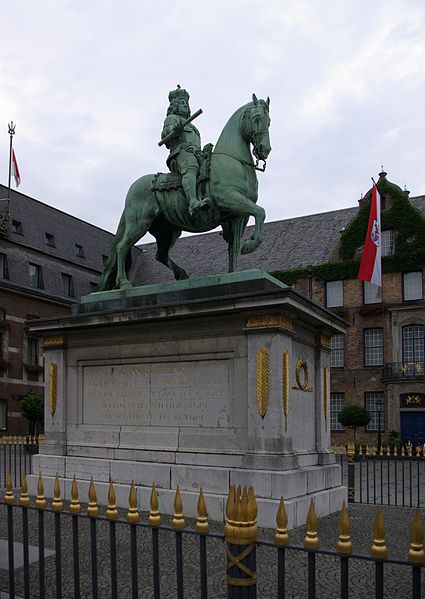
The Reiterstandbild of Duke Johann Wilhelm is a bronze equestrian statue located in Düsseldorf, Germany. The statue depicts Johann Wilhelm II, the Elector Palatine and Duke of Neuburg, on horseback.
The statue was created by the Dutch sculptor Gabriël Grupello in the late 17th century and is located in the heart of Düsseldorf, in the Marktplatz. It is considered one of the most famous equestrian statues in Germany and an important symbol of the city’s history and culture.
The statue depicts Johann Wilhelm II wearing military dress and a plumed helmet. His right hand is raised, as if giving orders, while his left hand holds the reins of the horse. The horse is also highly detailed, with its veins and muscles clearly defined, and its head turned slightly to the left as if looking at something in the distance.
The statue is notable for its realism and attention to detail, particularly in the depiction of the horse’s movement and the intricate details of Johann Wilhelm II’s armor. It is also notable for the fact that the statue was originally located in the city of Mannheim, but was moved to Düsseldorf in the 18th century.
The Reiterstandbild of Duke Johann Wilhelm is an important symbol of the history and culture of Düsseldorf, and is widely regarded as one of the most impressive equestrian statues in Germany. It is a testament to the skill and artistry of Gabriël Grupello, and a reminder of the important role that horses played in the military history of Europe.
8. Leonardo’s Horse
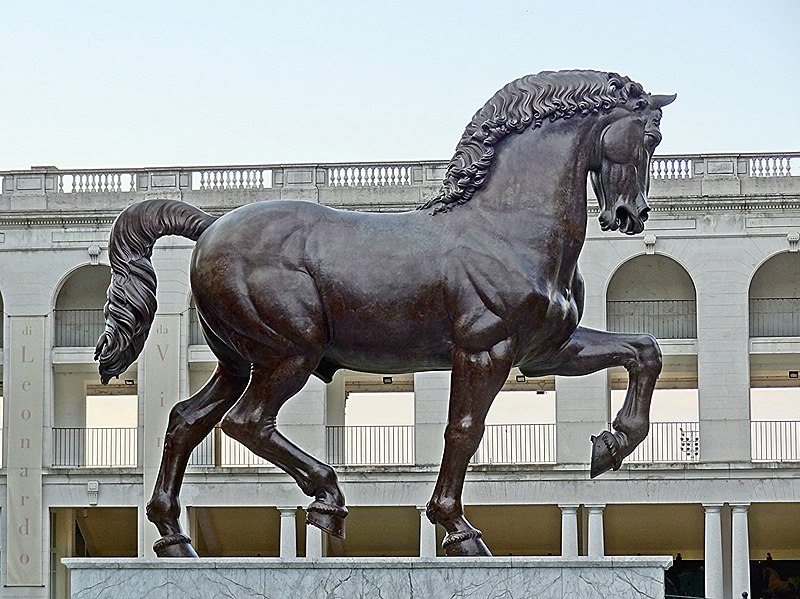
Leonardo’s Horse, also known as the Gran Cavallo, is a large equestrian statue created by the Italian artist and inventor Leonardo da Vinci. The statue was commissioned by the Duke of Milan in the late 15th century, but was never completed during da Vinci’s lifetime.
Da Vinci spent years working on the statue, creating detailed plans and sketches. However, he was forced to abandon the project in 1499 due to a shortage of bronze for casting the statue. The clay model he created for the statue was subsequently destroyed during a military invasion of Milan.
In the 1990s, a group of American art enthusiasts decided to fund a recreation of da Vinci’s Horse. The project was led by sculptor Nina Akamu, who used da Vinci’s sketches and notes to create a new version of the statue.
The new version of the statue was cast in bronze and unveiled in Milan in 1999, exactly 500 years after da Vinci began work on the original statue. The statue is located in the Piazza della Scala in Milan, and is considered a tribute to da Vinci’s genius and his lifelong fascination with horses.
The statue depicts a large horse, standing over 20 feet tall, with its head turned slightly to the right. The horse is highly detailed, with its veins and muscles clearly defined, and its mane and tail flowing realistically in the wind. The statue is considered one of the most impressive equestrian statues in the world, and a testament to da Vinci’s vision and creativity.
9. Equestrian statue of Louis XIV (Bernini)
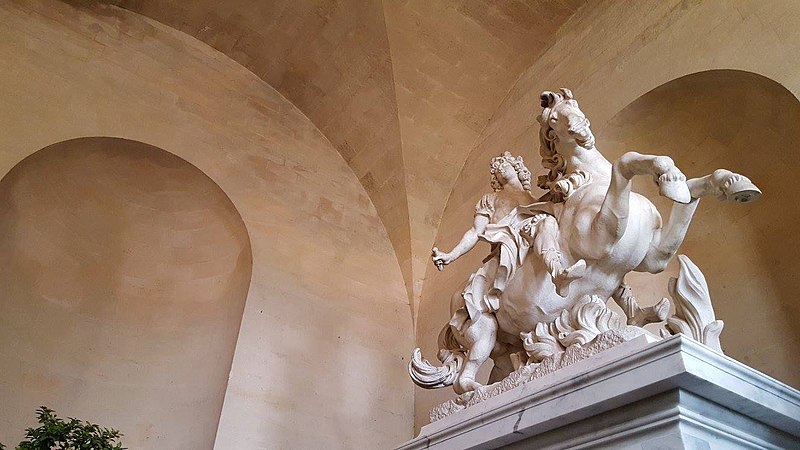
The Equestrian Statue of King Louis XIV is a sculpture conceived and partially created by the Italian artist Gian Lorenzo Bernini, who was sent to France to design a new Louvre front, a portrait bust, and an equestrian monument.
Bernini first considered the project in France in the mid-1660s, but it did not begin until later that decade, when he returned to Rome. It wasn’t finished until 1684, and it was sent to Paris in 1685.
Louis XIV of France was exceedingly dissatisfied with the ultimate result and had it placed in a corner of the royal palace gardens at Versailles.
Sometime later, François Girardon transformed the sculpture into an equestrian sculpture of the historical Roman hero Marcus Curtius.
10. Monument to Philip IV of Spain
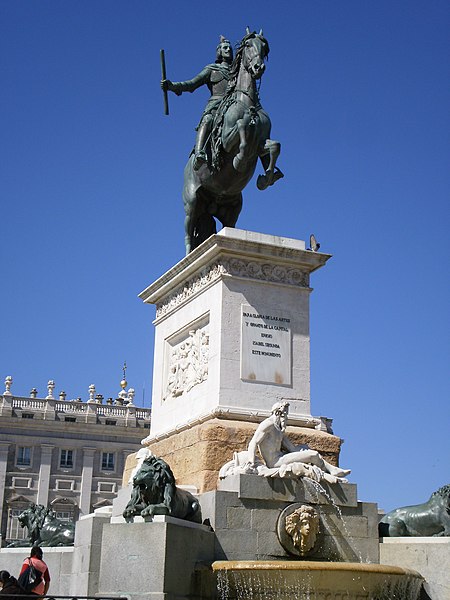
The Monument to Philip IV of Spain is a bronze equestrian statue located in the Plaza de Oriente in Madrid, Spain. The statue depicts Philip IV of Spain, who reigned from 1621 to 1665, on horseback.
The statue was created by the Italian sculptor Pietro Tacca in the 17th century and is considered one of the most important equestrian statues in Spain. It was commissioned by Philip IV’s wife, Queen Mariana of Austria, to honor her husband’s military achievements.
The statue depicts Philip IV on horseback, wearing a suit of armor and a plumed helmet. His right hand is raised, as if giving orders, while his left hand holds the reins of the horse.
The horse is also highly detailed, with its veins and muscles clearly defined, and its head turned slightly to the left as if looking at something in the distance.
The statue is notable for its realism and attention to detail, particularly in the depiction of Philip IV’s armor and the intricate details of the horse’s tack. It is considered a masterpiece of Baroque sculpture, and is widely regarded as one of the most important works of art in Madrid.
The Monument to Philip IV of Spain is an important symbol of Spanish history and culture, and is a testament to the skill and artistry of Pietro Tacca. It serves as a reminder of the important role that horses played in the military history of Europe, and the enduring legacy of the Spanish monarchy.

